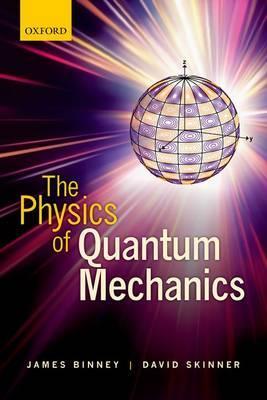Physics of Quantum Mechanics

Physics of Quantum Mechanics
the familiar classical, dynamical world through the quantum interference of stationary states. The text stresses the continuity between the quantum world and the classical world, which is merely an approximation to the quantum world.
The connections between observables, operators and transformations are clearly explained and the standard commutation rules derived from the properties of spacetime. A chapter is devoted to entanglement, quantum computation, density operators and their role in thermodynamics, and the measurement problem. Scattering phenomena, including the origin of radioactivity, are handled early on in the accessible context of one dimension, and at the end of the book with some rigour in three dimensions.
Hydrogen and helium are discussed in some detail and it is shown that quantum mechanics enables us to understand the structure of the periodic table without engaging with the complexities of many-electron atoms.
Dirac notation is used from the outset and students are trained to move easily from one representation to another, choosing whichever representation is best suited to a particular problem. The mathematical prerequisites are no more than simple vector algebra, Taylor series expansion and the use of integrating factors to solve linear first order differential equations. Rigorous algebraic methods are preferred to the solution of partial differential equations.
PRP: 374.30 Lei
Acesta este Prețul Recomandat de Producător. Prețul de vânzare al produsului este afișat mai jos.
299.44Lei
299.44Lei
374.30 LeiLivrare in 2-4 saptamani
Descrierea produsului
the familiar classical, dynamical world through the quantum interference of stationary states. The text stresses the continuity between the quantum world and the classical world, which is merely an approximation to the quantum world.
The connections between observables, operators and transformations are clearly explained and the standard commutation rules derived from the properties of spacetime. A chapter is devoted to entanglement, quantum computation, density operators and their role in thermodynamics, and the measurement problem. Scattering phenomena, including the origin of radioactivity, are handled early on in the accessible context of one dimension, and at the end of the book with some rigour in three dimensions.
Hydrogen and helium are discussed in some detail and it is shown that quantum mechanics enables us to understand the structure of the periodic table without engaging with the complexities of many-electron atoms.
Dirac notation is used from the outset and students are trained to move easily from one representation to another, choosing whichever representation is best suited to a particular problem. The mathematical prerequisites are no more than simple vector algebra, Taylor series expansion and the use of integrating factors to solve linear first order differential equations. Rigorous algebraic methods are preferred to the solution of partial differential equations.
Detaliile produsului









